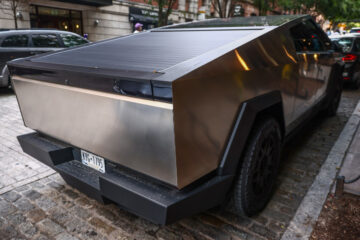The legacy South Korean automaker is the vehicle maker rising in the electric market.
Nothing stops Hyundai anymore.
The South Korean automaker seems to have the “it factor” and isn’t keen on letting it go.
The vehicle maker and Kia, of which it is the majority and controlling shareholder, surprised recently when figures showed that the company has become the second biggest seller of electric vehicles in the United States thanks to two models: the futuristic SUV Ioniq 5 and the EV6 crossover.
It was then that observers realized that the biggest threat to Tesla (TSLA) – Get Tesla Inc. Report might not come from the big names like Ford (F) – Get Ford Motor Company Report, Volkswagen (VLKAF) , GM (GM) – Get General Motors Company Report or even Mercedes-Benz (DDAIF) , whose thunderous announcements in recent months made people forget that other automotive groups could join in the race to the top that everyone is engaged in in the very lucrative sector of electric vehicles.
Hyundai seems to have turned the map upside down. Elon Musk, the charismatic and whimsical chief executive officer of Tesla, summed up the surprise rise of the South Korean group with these words.
“Hyundai is doing pretty well,” Musk wrote on Twitter on June 17.
The Return of The Classic Sedan
Hyundai is determined to strike hard and above all to send a clear message to its rivals: the firm wants to win this race and is not there to play extras.
And to prove it, the vehicle manufacturer has just given us a small taste of a vehicle that will be talked about a lot: the Ioniq 6. It’s a curious sedan, or let’s say it’s a very curious object.
Announced in 2020 by the Hyundai’s Prophecy concept car, the Ioniq 6 sedan has a minimalist silhouette that is openly inspired by the “streamline” design of the 1920s and 1930s. These were the beginnings of aerodynamics applied to the automobile, far from the current crossover-type. Hyundai seems to go back to a classic and spectacular profile.
The Ioniq 6 seems to take up the main lines of the 2020 Prophecy, with the exception of the relatively classic front face and the stern flanked by the light strip in pixels, the signature of the Ioniq models introduced by the Ioniq 5 –pixels also present in the matrix LED headlights.
We also find this curious overhanging spoiler of the “ducktail” type, which is reminiscent of a three-quarter rear… a Porsche 911 Turbo from the 1980s to which we would have grafted two doors and lengthened the wheelbase!
The analogies are multiple, visually. The Ioniq 6 reminds others of the Tatra 603 from the 1960s or the 1947 Saab 92.
The extremely low plunging profile of the front part, the active valves, the flush handles and other aerodynamic elements allow here to display a remarkable coefficient of 0.21, one of the lowest drag coefficients on the market. It’s the same as Tesla’s Model 3.
This is to date one of the only data communicated, the characteristics of the batteries and engines should be unveiled in the coming weeks.
Challenges Tesla and Mercedes
However, the Ioniq 6 shares the same modular platform with the Ioniq 5. It should then logically inherit the same technical configurations. For the record, the latter offers two batteries (57 kwh or 73 kWh, soon to be increased to 77 kWh), and three power levels (170 hp, 218 hp and 306 hp).
Autonomy should be slightly more favorable, given the more elaborate aerodynamics, and easily reach 310 miles on a single charge.
Inside, the Ioniq 6 will have a 12-inch display for the gauge cluster, and a 12-inch touchscreen for the multimedia unit.
Hyundai hasn’t given a price yet.
The production is expected to begin in July, and the official launch is scheduled for July 14.
The Ioniq 6 wants to pose as a direct rival of the Tesla Model 3 and Model S, but also of the Mercedes EQE, the electric counterpart of the E-Class.
Hyundai is changing the rules in the industry, especially the one that says production models always differ quite significantly from the concept car from which they derive. Technical/industrial constraints, standards and cost logic explain it.
The Hyundai Ioniq 5 has no use for this rule. And the Ioniq 6 should follow suit.


